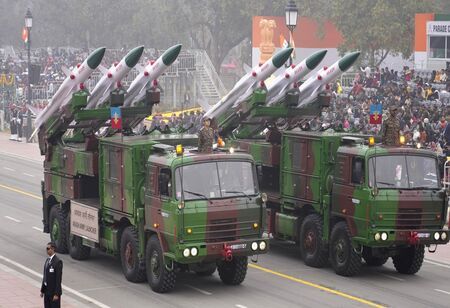
India’s Military Alacrity for Modern Threats


John Spencer, retired United States Army officer says, “From missiles like BrahMos and Pinaka to radars and artillery systems, Indian-made equipment proved itself in live combat. That’s not just a national achievement—it’s a model of military readiness for any nation facing the modern threat.” A fatal militant assault in Pahalgam, located in Indian-administered Kashmir, has led to a significant escalation between India and Pakistan, with both countries exchanging gunfire along the Line of Control and reducing diplomatic relations. On May 6, India announced the launch of ‘Operation Sindoor,’ a military campaign aimed at nine sites in Pakistan and Pakistan-administered Jammu and Kashmir, which it asserted were involved in the planning of attacks.
In response, Pakistan made efforts to retaliate by deploying numerous drones and missiles targeting both civilians and important defense facilities in regions such as Jammu, Pathankot, and Jaisalmer. However, not a single missile successfully struck its target. India's air defense system successfully intercepted all of them, preventing any attempted breaches by Pakistan. Let’s look into key weapons India is believed to have used during Operation Sindoor.
Akash Missile
The Akash is a homegrown Indian surface-to-air missile (SAM) system developed by the Defence Research and Development Organisation (DRDO). It boasts a range of 45–70 km and is engineered to counter aerial threats such as drones, missiles, and aircraft, achieving a high success rate. The Akash system has reportedly been widely deployed along India’s western border and the Line of Control (LoC) in Jammu and Kashmir. It has been instrumental in intercepting Pakistani drones and missiles aimed at 15 Indian military installations, including bases in Jammu, Srinagar, Pathankot, and Bhuj.
SCALP
A highly sophisticated air-launched cruise missile featuring stealth technology, the SCALP is designed for precise long-range strikes. In the UK, it is referred to as Storm Shadow, and the SCALP-EG (Système de Croisière Autonome à Longue Portée – Emploi Général) is tailored to perform effectively in adverse weather conditions and during nighttime operations. Created by the European defense consortium MBDA, this missile has a range of 450 km and operates at low altitudes, which helps it evade enemy radar detection. With an advanced guidance system that integrates an Inertial Navigation System (INS), GPS, and terrain-following technologies, it can accurately hit fortified positions like bunkers and ammunition storage sites.
Loitering Munitions (Kamikaze Drones)
India has utilized one-way attack drones designed to hover over a designated target area and deliver precise strikes upon detecting a target. Among these was the IAI Harop, developed by Israel Aerospace Industries, which functions as a loitering munition that integrates both UAV and missile capabilities. It can remain airborne for as long as 9 hours, has a range of 200 km, and employs electro-optical sensors to identify and engage high-priority targets such as air defense systems and radar installations. Reports suggest that India deployed Harop drones during Operation Sindoor to target Pakistani air defense systems and radar facilities.
L-70 Anti-Aircraft Gun
Originally developed by Bofors of Sweden, the L-70 40mm gun is now being produced in India under license and has received substantial improvements, including radar, electro-optical sensors, and auto-tracking capabilities. Reports indicate that India utilized this gun to counteract Pakistani drone swarm assaults at several locations. The weapon is capable of firing between 240 and 330 rounds each minute, reaching targets up to 4 kilometers away, and has become a primary defense against drones that attempt to evade detection.
In the context of combating drones, it effectively saturates the atmosphere with predictive fire, making it highly proficient at defending against swarm attacks or drones trying to avoid radar detection.
The enhanced L/70 includes a range of contemporary technologies.
- Electrical Servo Drives: Substitute hydraulic systems for enhanced precision and efficiency in control.
- Electro-Optical Fire Control System: Enhanced abilities for target identification and tracking.
- Radar: Combined radar technology for detecting and tracking targets, featuring a new X-band radar for autonomous drone detection.
- Auto-Tracking: Automatic acquisition and tracking of targets in all weather conditions.
- Video Tracking: Allows for visual verification of targets to improve firing accuracy.
Also Read: Dave Thomas: A Role Model for Aspiring Entrepreneurs, Philanthropists
ZSU-23-4 Schilka
The Schilka, of Russian origin, is equipped with a tracked platform featuring four 23mm cannons and utilizes radar that can detect targets up to 20 kilometers away. Recently, it has been enhanced with fire-control technology and fuse-based ammunition and has been deployed to address drone threats from Pakistan during Operation Sindoor. With the capability to discharge 4,000 rounds per minute, the Schilka now employs proximity-fused shells and precision tracking, making it a powerful defense against drones, helicopters, and agile threats such as light armored vehicles.